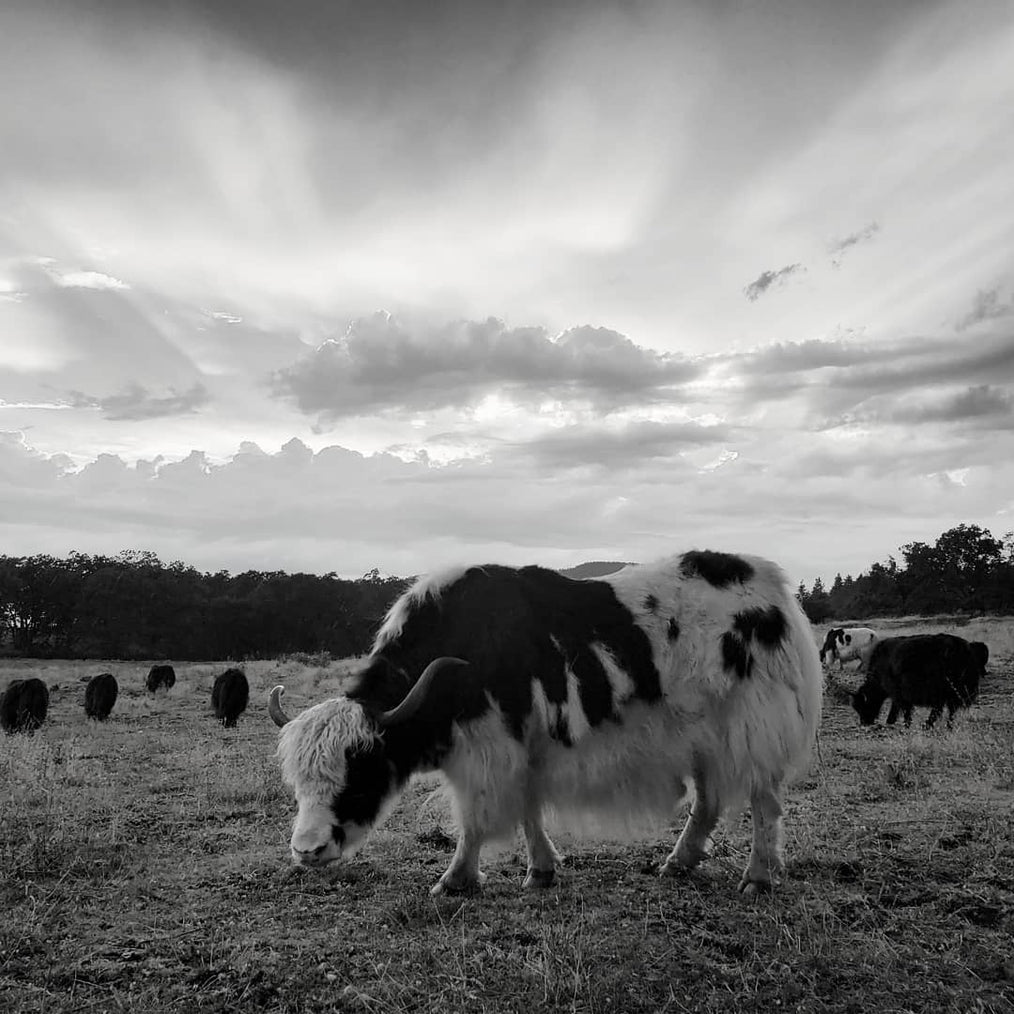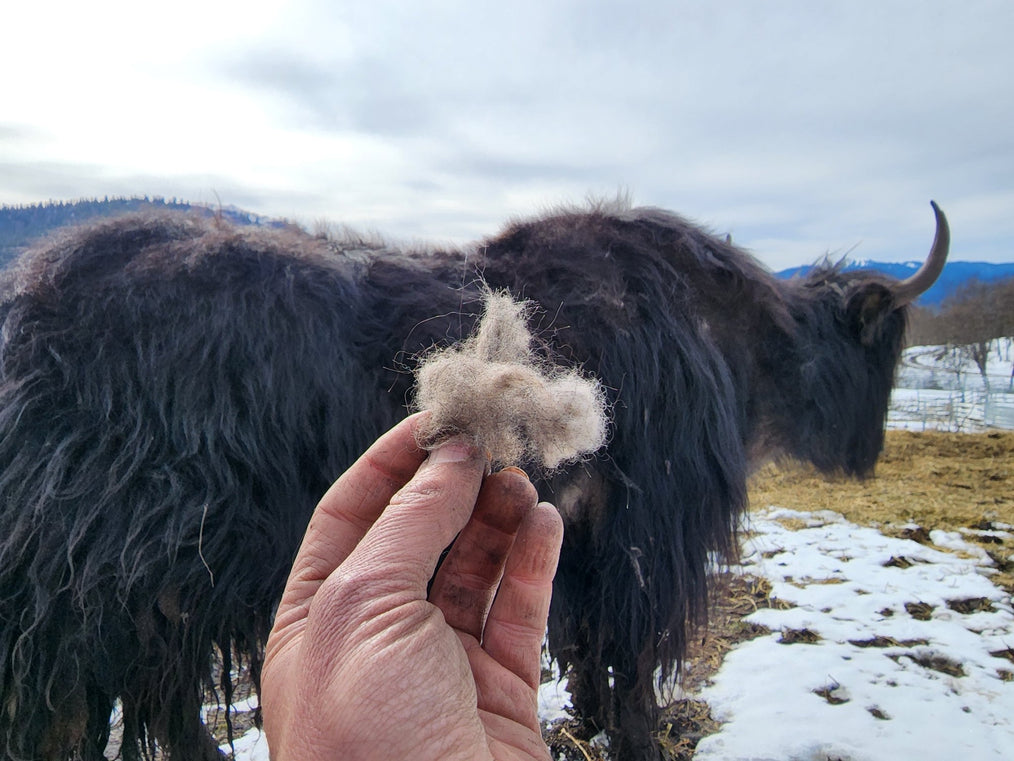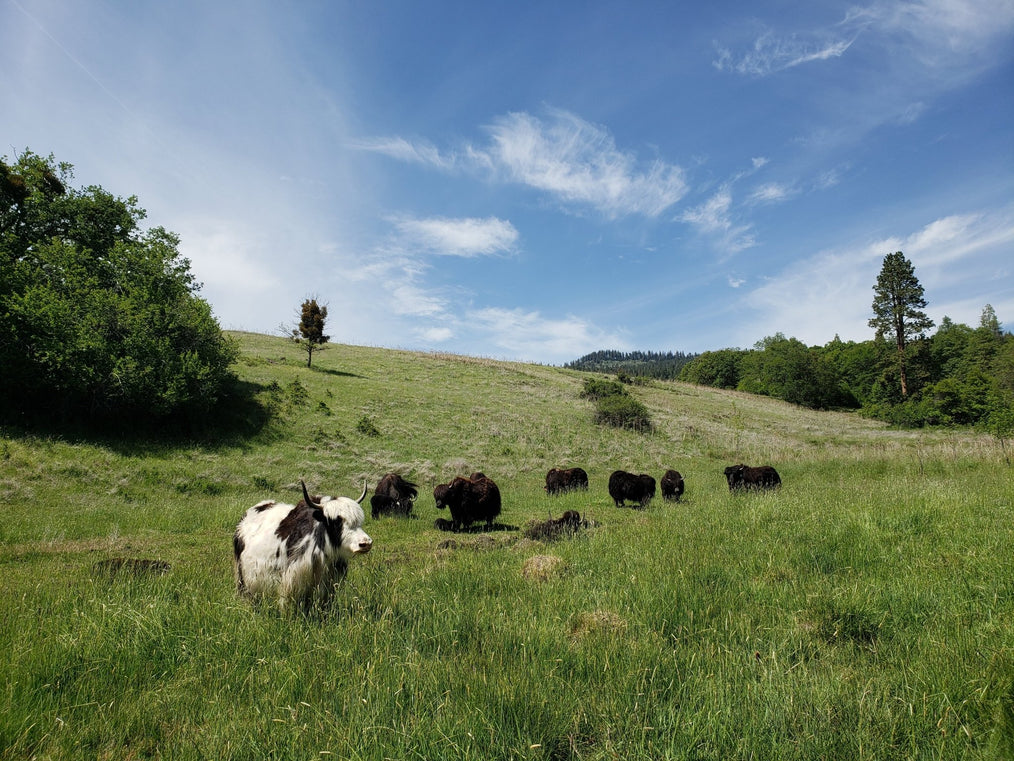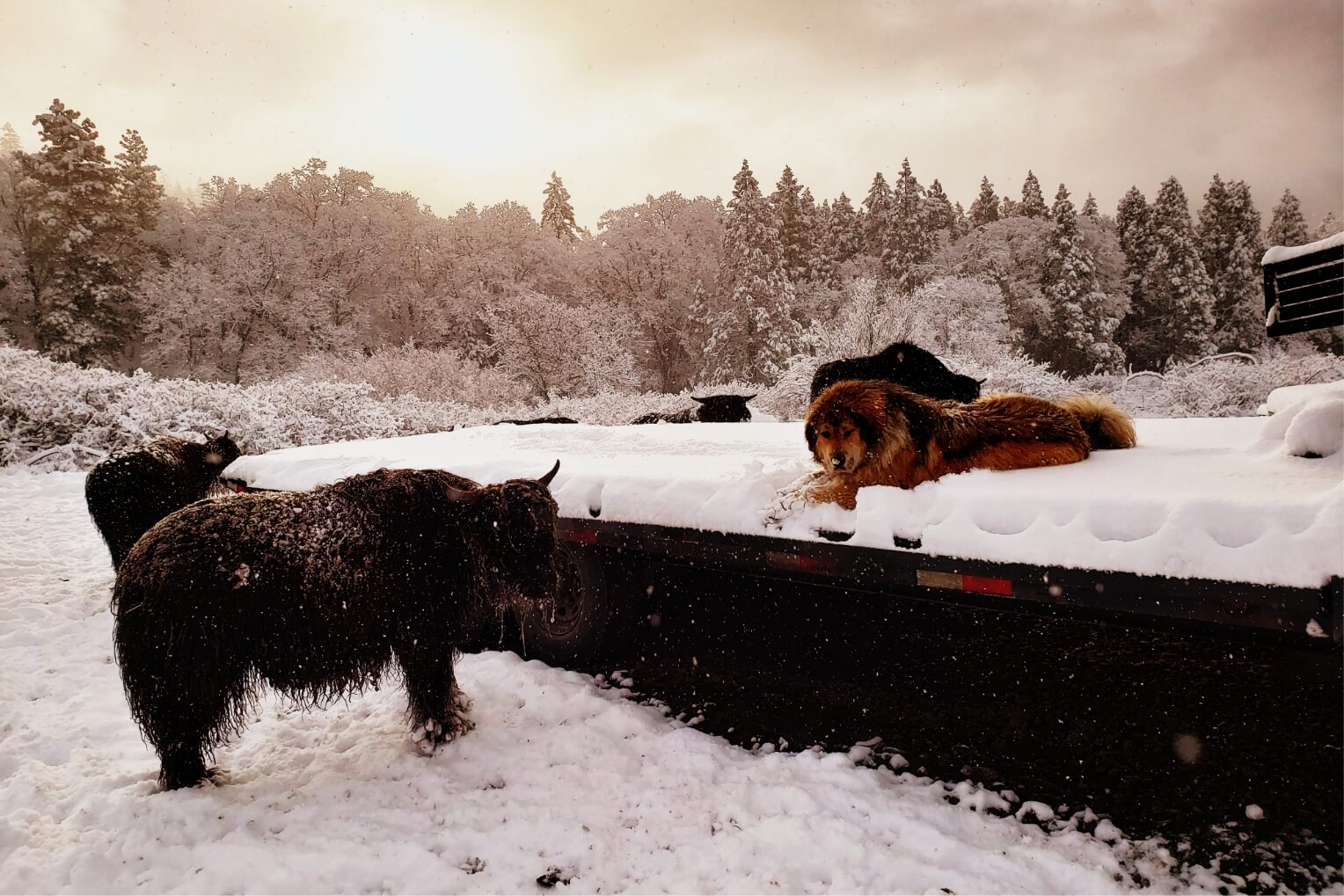
For thousands of years, domesticated yaks have played a vital role in the livelihood of communities throughout Central Asia, including Tibet, Nepal, Bhutan, and parts of China, and were primarily responsible for the transportation of goods and people. Today, yaks help cultivate and plow fields, fertilize the soil, produce milk, and yield valuable yak hair and fiber.
Coveted for its softness and warmth, yak down is highly desirable for its cashmere-like qualities. Known for their strength, durability, natural water resistance, and unique cultural heritage, yaks serve as a valuable source of both luxurious, high-quality down and rugged outer hair.
Thinking about owning a herd for fiber production? Read on to learn more about these 7 things to know about yak fiber.
- The right yak for you will depend on your needs and objectives, as the quality of fiber produced by yaks is determined by both genetics and the environment. For example, a high fiber-producing yak may yield less during warmer winters. Yet even in the coldest climates, genetics will determine the quality of their down.
- Hand-spinning and homestead use require a very specific kind of farm yak, with excellent low-micron fiber and larger hairs that can easily be separated by hand for removal from down fiber.
- On breeder farms, choosing the right bull is important to maintain quality for future generations. Overall fiber production and quality are traits that will be passed down to offspring.
- Our herd has all types of useable fiber, from rug-making yaks with thick, coarse outer hair, to fiber farm yaks with high-end down for luxury wearables.
- Yaks are efficient grazers and put less strain on local resources than cattle. Because yaks have multiple uses, can withstand harsh climates and are a smaller bovine, they provide a sustainable and eco-friendly material that can be harvested without damaging the environment.
- Ultra-wooly yaks require a lot of grooming and don’t always promise a high yield of down fiber. Grooming at least twice a year is necessary and involves significantly more brushing than other, shorter-haired yaks. It is also necessary to have the equipment to groom them, such as a chute and hand tools. It is possible to have super woolies with good down production, but some produce less because their exterior coat has so much insulation in itself. But that long outer coat hair has many uses, like ropes and outerwear!
- Some plain-coated yaks require no grooming and are more suitable for those without the time or resources to maintain longer-haired yaks. Down fiber can be brushed off these yaks for collection, or left to fall off naturally as they scratch on trees in the spring.

The individuals in our herd happen to have personalities ranging from adorable to extreme diva and are as funny and enjoyable as they are beautiful. Whether you’re planning to produce yarn, make rugs, blankets, or clothing, Firebird Farms can help guide and educate you to choose the right yak for your yak fiber needs.
Follow along with our herd on Instagram at @firebirdfarms, or get in touch by filling out our contact form here.



